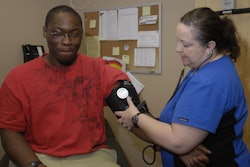In 2013, the Federal Motor Carrier Safety Administration offered a dark valentine to motorcoach/bus companies with announcement of its “Operation Quick Strike” enforcement sweep of such companies, during which it deployed investigative teams to target companies deemed “high-risk” by FMCSA terms. Those terms at the time defined a high-risk carrier as one whose ranking in the Unsafe Driving, Hours of Service Compliance or Crash Indicator BASIC exceeded 85 and who had one other Safety Measurement System BASIC ranking above the intervention/alert threshold. Another way to be deemed “high-risk” was to have four SMS BASICs above the intervention threshold.
The agency’s since changed that definition, narrowing it somewhat to include fewer carriers — for freight carriers to be considered high-risk today, the thresholds are 90 for Unsafe Driving, Hours of Service Compliance, Crash Indicator and Vehicle Maintenance BASICs, and the carrier has to be at that level or above for two consecutive months in at least two of those categories to get the designation. (Such carriers who have in fact been investigated in the past 18 months will not receive the designation.)
In 2013 reporting in the inaugural CSA’s Data Trail series, I outlined FMCSA’s further plans for the “lessons learned” from those quick-strike bus-investigation teams, in part by summarizing an official speaking on background about agency intentions to apply such to trucking. The official …
made note that truck fleets could be certain that lessons learned from the experience also would be applied to them – and sooner rather than later.
The time is now, if you take compliance consultant Jeff Davis of Fleet Safety Services at his word. One of the principle things that came out of the training of those federal quick-strike teams, Davis says, is agency appreciation of the use of “Enhanced Investigative Techniques,” or EIT in the parlance of acronym-happy bureaucratese. At the National Association of Small Trucking Companies‘ annual meeting last month, Davis noted you might think of them in the context of another EIT, Enhanced Interrogation Techniques — “CR waterboarding,” he joked, using the abbrevation for “compliance review.” Bottom line: FMCSA is “changing the way they’re doing audits throughout the U.S.,” Davis said.
In the past, when FMCSA came calling to do a full on-site compliance review at company headquarters, contact with company representatives might be limited for small carriers to the company owner or safety director, and maybe one other administrative person. He used the example of the requirement of every company for each of its trucks to have an annual inspection. “In the past,” he said, “what you’d been able to do was, as long as you had that piece of paper” showing you did the inspection, “the auditor would check the box and move on. What they’re doing now is looking past the documents and looking into the culture of the company. They’re holding sequestered one-on-one interviews with accounting, with sales, with drivers, and checking social media.”
FMCSA has telegraphed that this kind of approach to on-site compliance reviews was coming for years now, through statements from folks like the background official I spoke to years ago on up to the head of the FMCSA.
In the quarterly Guardian publication from the Commercial Vehicle Safety Alliance (second quarter 2015), FMCSA training center director Ron Crampton outlined the intention to make training in EIT available to state auditing personnel, to add to the already-trained federal force. “The training is taught by seasoned investigators and uses case studies to help students apply the techniques,” Crampton wrote on p. 12 of the publication. “Since implementing the EIT program at FMCSA, the agency has significantly increased the enforcement rate for investigations and has issued numerous out-of-service orders.”
“I think it’s very important to understand what’s going on,” Davis said. “I’ve seen it in action and I’ve seen documentation of how it works.”
Any carrier, including independent owner-operators, that has been through a recent CR/audit, he noted, would do well to make a Freedom of Information Act request for what he called “Part C” of their audit report — Part A lists basic carrier information, Part B the violations found, and both of which carriers receive as a routine matter after an audit, Davis says.
Part C, not so. “They do not release that to you,” Davis said, and what it shows essentially are the auditor’s notes, the method of operation of how you went through your audit. … [A copy of it can provide] invaluable learning. It will list who they talked to and what their responses were, down to the nth degree” of detail.
As far as Motor Carrier Safety Assistance Program states (most of them) taking up FMCSA on its training offer, we all know how disparate practices can be in execution from law enforcement of all stripes, depending on the jurisdiction.
 “What’s it mean when a bunch of exclamation marks pop up on my computer?” —Anonymous Tennessee state trooper, after checking a carrier’s DOT number, to a driver he’d just put through a Level 3 inspection — and clear evidence understanding of the CSA Safety Measurement System isn’t total among law enforcement. The driver knew what those marks meant — alerts that the carrier’s category scores were higher than FMCSA’s intervention thresholds — but didn’t exactly offer to help the officer. He was on his way shortly.
“What’s it mean when a bunch of exclamation marks pop up on my computer?” —Anonymous Tennessee state trooper, after checking a carrier’s DOT number, to a driver he’d just put through a Level 3 inspection — and clear evidence understanding of the CSA Safety Measurement System isn’t total among law enforcement. The driver knew what those marks meant — alerts that the carrier’s category scores were higher than FMCSA’s intervention thresholds — but didn’t exactly offer to help the officer. He was on his way shortly.Davis said it’s a mixed bag around the country for auditors/compliance review officers/investigators, whatever we want to call them: “Some states have adopted it more than others. Some auditors are crazy about it, some are not.”
Have you been audited lately? What evidence did you see of “enhanced investigative techniques?”
Whatever the case, particularly if your operation moves into the high-risk category by the numbers, it’s likely you can expect them in the future.
Other points from Davis’ presentation at the NASTC meeting
Drive toward the Safety Fitness Determination: “The agency is going through experiment after experiment with the data trying to figure out some way to make our roadside performance [via inspections] and office performance [via compliance reviews] into a safety rating.”
On the meaning of a Conditional rating today: “At all costs, you cannot afford to have a Conditional safety rating. I’ve seen 15-power-unit companies go out of business from a Conditional safety rating. … FMCSA has done well deputizing shippers and brokers to do their job for them and tapping into a carrier’s revenue.”
The inclusion of the Unsafe Driving category in audit scoring process if SFD sees light of day: “For the first time ever, Unsafe Driving will be brought into the audit process. … What they’re telling us is that everybody in this room has to control [driver behavior on the road to some degree]. … If you have any records of speeding, of following too close, … that will all be used against you in the rating process.”
Explosion of data in the safety-enforcement realm: What we’re seeing in the safety world is the explosion of data. … footprints everywhere we go. That’s why we have to make sure that we are watching every little piece of data that we have. E-logs will really open up an area for the agency to pinpoint and request all kinds of other documents.”
Further reading about these issues can be found in the text and other links above.




![shutterstock_50107477 [Converted].eps](https://img.overdriveonline.com/files/base/randallreilly/all/image/2014/09/ovd.GOLDEN-TRIANGLE.png?auto=format%2Ccompress&fit=crop&h=167&q=70&w=250)






